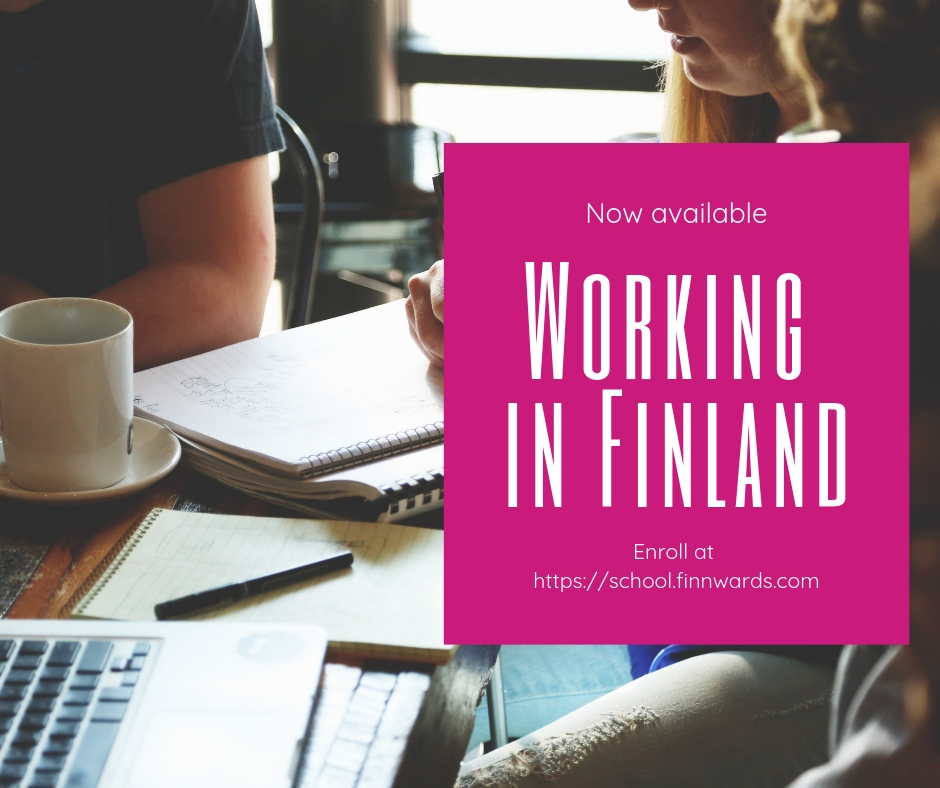In our blog, we talk a lot about working conditions in Finland. We’ve looked at discrimination and gender equality issues in a number of our blogs. We’ve also specifically talked about what it’s like to work in Finland.
This week the Ministry of Economic Affairs and Employment in Finland published a brief look into the results of their 2020 Working Life Barometer. We’ve used the earlier barometers in some of our earlier blogs.
In this blog, we’ll take a look at how employees felt working conditions in Finland changed in 2020 during the pandemic. We talked a bit about pandemic-related changes in the Finnish labor market a couple of weeks ago and also last week.
The Working Life Barometer
These barometers are annual surveys authorities have conducted since 1992.
Their purpose is to describe changes in working conditions and the quality of working life in Finland. These are employee surveys so the surveys reflect their point of view. In addition, these barometers reveal how employees think Finnish working life will change in the future.
Policymakers use these barometers when drafting new policies concerning the Finnish working life. Researchers, in turn, use them in their studies of the same.
This most recent barometer was conducted in August and September of last year. So about 6 months into the global pandemic.
The researchers interviewed 1 647 people. The length of each interview was about 20 minutes.
The interviewees were employees between 18 and 64 years of age. They worked at least 10 hours a week and spoke Finnish. The selection of the interviewees was based on stratified random sampling from the population registry. Thus the survey results can reliably be interpreted to represent all employees in Finland in all sectors.
You can refer to the publication for a more thorough description of the methods as well as the interview questions.
The final report on the 2020 results will come out at the end of this year. This preview looks particularly at innovation activities, working hours, and learning and development issues.
We, instead, look at the results to see what seems to have stayed the same in working conditions in Finland and what instead has changed.
Positive long-term trends working conditions in Finland continue
Last year in our discussion about the 2019 Working life Barometer we highlighted some continued positive developments in Finnish working conditions.
For example, an increasing number of employees feel that managers take a constructive attitude towards their development ideas. In 2019, 76 % of employees firmly or at least somewhat agreed with this statement. Last year, already 82 % of employees felt that way.
Also, the clear majority of employees feel that their workplace encourages them to try out new ideas. In 2020, 26 % of employees strongly agreed with this statement and an additional 48 % agreed with it at least somewhat.
The portion of employees feeling that they can continuously learn new things at work has continued to grow. In 2019, 82 % of employees felt that this definitely or at least somewhat described their situation. Last year, 85 % of employees felt that way.
So, in many respects, working conditions in Finland continue to develop in a positive direction. In some areas, development is slower than in others but at least working conditions as a whole do not seem to be deteriorating.
Want to ensure you know how Finnish employment relationships work? Take our extensive “Working in Finland” online course and you’ll know! Get it now from our online store!
Pandemic-related changes in working conditions in Finland
Last week we examined some negative impacts the Corona pandemic has had particularly on women’s participation and status in the labor market.
The pandemic has, however, also generated other changes in working conditions in Finland. Or at least it has sped up or intensified developments that were taking place anyhow.
One of these is remote work. The other is the increasing use of digital workspaces and instant messaging at work. Instant messaging here doesn’t include email or standard text messages.
Digital platforms and instant messaging
The barometers have tracked the use of digital workspaces and instant messaging since 2015. The question they’ve asked can be translated as “At work, do you use digital workspaces or instant messaging that enable you to discuss, share information, and collaborate virtually?”.
In 2015, 47 % of employees said they used digital workspaces or instant messaging at work. By 2019, the share of employees using them had climbed to 65 %. Last year, the number jumped to 75 %.
There isn’t a significant difference in the share of women and men using them but there are clear differences between employees in different positions. In 2020, 97 % of senior managers used digital workspaces and instant messaging at work. In lower management positions, their share was 79 %. 44 % of manual laborers used these tools.
Despite these differences, there were clear increases in the use of such digital tools in all groups. Among senior managers and manual workers, the jump was 10 percentage points.
In government jobs, the use of such digital tools was already high before the pandemic. So the 2020 jump was not particularly pronounced. In the municipal sector, however, it was. Prior to the pandemic, about 63 % of municipal employees took advantage of these types of digital tools. In 2020, already 79 % of them did.
The pandemic didn’t, however, generate a similar bump in work-related social media use in comparison with previous years.
Remote work
Remote work, work done outside the workplace based on an explicit agreement with the employer, has slowly increased in Finland within the last 10 years. Still, the significant majority of Finnish employees (68 %) had not worked remotely before the pandemic.
The interviewers asked how many of those who had not worked remotely at all before the pandemic intended to do so now. About 24 % of those said that as a result of the pandemic they had now worked remotely.
This means that about half (48 %) of Finnish employees engaged in remote work in 2020. Prior to the pandemic, about 36 % had done so.
Among those who had worked remotely before the pandemic, 86 % said they work remotely more than before.
Remote work increased particularly among women (33 % in 2019, 50 % in 2020), upper management (69 % vs. 87 %) and government employees (60 % vs. 87 %).
Finnish employees were also quite happy with remote work. 44 % of employees were very satisfied with remote work. An additional 48 % were somewhat satisfied.
There has already been some research into remote work and how Finnish employees have adapted to it. Because this is such an interesting topic with regards to the future of work, we will return to this topic in a later blog.


Working conditions in Finland & Finnwards
If this is your first encounter with our blog, we encourage you to also explore our previous posts. We post extensively about different aspects of the Finnish working life.
While we intend these posts to reach readers who are new or relatively new to the Finnish job market, our posts are sure to contain information that interest also more experienced employees.
Check out also our self-guided online courses in our Work in Finland -series. If you, for example, want to learn about the Finnish employment contract and its contents, our inexpensive mini-course is great for that.
Our extensive Working in Finland course, in turn, is an in-depth course on the rules governing Finnish employment relationships. While we firmly believe that every employee in Finland should know the things we cover in it, it’s particularly valuable for managers. The course content is essential knowledge for managers in Finland.


This is your ultimate guide to rules governing Finnish employment relationships. Get it from our online store!
The mission of Finnwards is to help internationals thrive in their life abroad. We provide coaching, consulting, and training services that help them do just that. Check out our Services for Businesses and Organizations or our Expat Inspiration Catalog for more information! While we serve internationals and their employers all over the world, our specialty is Finland. With our help, internationals can build a uniquely Finnish life for themselves and their family. In addition to the coaching, consulting and training services, we also offer a wide selection of self-guided online courses about Finland. Contact us and let us help you or your employees succeed in their professional and private lives abroad and in Finland.
- Most common jobs for foreigners in Finland - August 29, 2024
- Skills recognition and learning at work in Finland - April 18, 2024
- It pays off to study – a glance at expected career lengths in Finland - April 4, 2024




